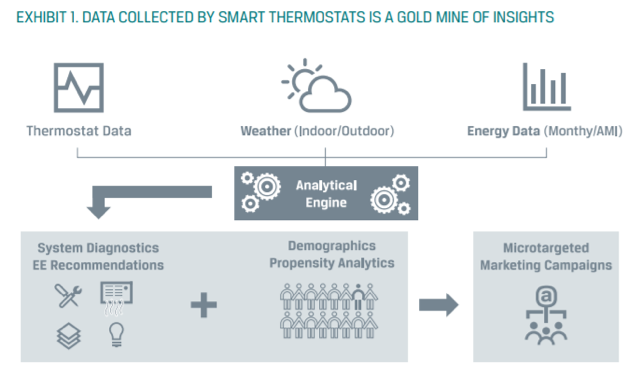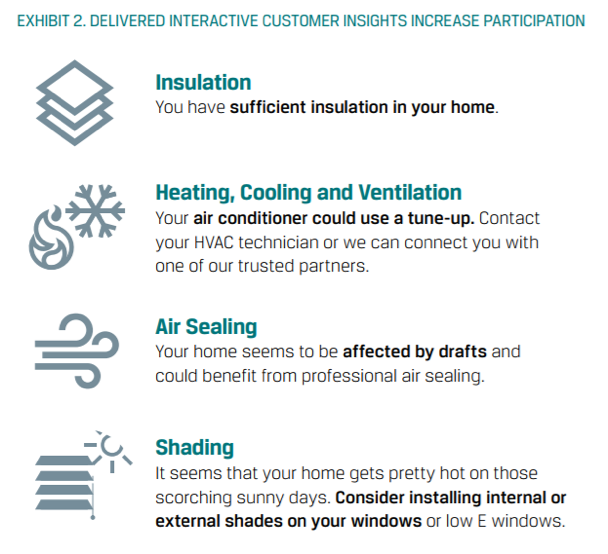
Smart thermostats offer much more than out-of-the-box savings
Smart thermostats can provide utilities new or supplemental paths into demand response, revenue generation, grid optimization, and enhanced customer experience.
You know your own living space better than anyone: the knob placement for the perfect steamy shower, the switch for every light bulb. You know the quiet rumble of the washing machine. Perhaps most importantly, you know the subtle difference between 70 and 71 degrees on your thermostat.
But what if smart devices could quantify the amount of energy Americans are wasting on these appliances per year — down to the percentage point?
The IoT phenomenon enables us with technological control over our devices, but more importantly provides a deeper understanding of consumers’ energy output. The onus is on utility providers to build intuitive energy saving programs with a customer-centric approach. Specifically, smart thermostat programs provide us with the knowledge to maximize three key metrics: energy and cost savings, demand savings, and an enhanced customer experience engagement.
As titans like Amazon and Google disrupt industries with their dedication to anticipating customer needs, utilities must jump on the data rush. Here’s how.
IoT tech that pays for itself
Technology has created a culture of convenience for consumers ever since the advent of consumerism itself. The invention of the wireless remote control in 1955 showed Americans the promise of uninterrupted lounging while watching John Wayne ride the plains from Texas to Colorado.
The Internet of Things phenomenon has followed Wayne to the west coast, where Silicon Valley-based companies like Nest have reimagined the way we control our home devices. From an energy and cost savings standpoint, smart thermostat technology brings the best of both worlds for consumers and utilities.
While savings from thermostats is influenced by how occupants set the temperature, connectivity and various algorithms (e.g., that take into account occupancy, weather, etc.) can help thermostats automate savings. Studies have found that these “smart” thermostats can save consumers between 8% and 22% for heating and 13% to 23% for cooling. Recognizing the impact that occupant choices and interactions can have on energy savings, the EPA requires thermostat manufacturers to submit both laboratory and aggregated field data that demonstrates a minimum savings of 8% for heating and 10% for cooling in order to qualify as an ENERGY STAR Smart Thermostat, with currently only seven thermostats qualified for the title.
Beyond energy savings that can be claimed when installing the device, smart thermostats provide a versatile out-of-the box platform for demand response, revenue generation, grid optimization and customer engagement. This puts utilities in a great position to adopt this technology as part of energy- and cost-saving programs for their customers.
Rethinking Traditional Demand Response
Smart thermostats can provide utilities new or supplemental paths into demand response. By recruiting customers who already have the thermostats installed in their home, such as through an existing energy efficiency program, utilities can enjoy lower acquisition costs by avoiding additional labor and material expenses associated with a dedicated installation. Additionally, by monitoring the runtimes, temperature, and humidity levels of each home during an event, utilities can maximize load shed or shifting within each home on an individual basis.
For example, utilities can capture deeper savings from homes with efficient envelopes versus those with inefficient envelopes, without sacrificing customer satisfaction or increasing opt-outs. In fact, in a recent pilot conducted by ICF, smart thermostats were able to reduce runtimes by up to 95% during summer demand events while maintaining a customer satisfaction of 86%.
A Pathway to Enhanced Customer Experience
While the annualized energy and peak demand savings associated with a relatively low cost measure is very exciting for most utilities, the real magic lies in granular data acquisition, control and optimization algorithms, and the connection to the cloud. This provides utilities with a platform for more accurate virtual home audits, home automation, and more personalized customer engagement. For example, ICF is using advanced analytics with smart thermostat data to identify homes with large potential for savings and then targeting these customers for participation in other utility offerings (Exhibit 1).

Smart homes require smart utilities
For all the trepidation regarding the security resilience of smart homes, it’s easy to lose sight of the deep knowledge we can gain about consumer energy usage. Treating smart devices as part of the ecosystem of a connected home helps utilities empower customers, which in turn powers a robust DSM strategy. Utilities have the opportunity to help customers cut costs without them lifting a finger… making it even better than reinventing the remote control.
Have questions on the IoT wave or wisdom to share from your own experience? Shoot us a tweet @ICF.

This is accomplished by combining customers’ propensity to participate in energy efficiency programs with the more accurate assessment of their savings potential that can be determined from analyzing thermostat data. These insights are delivered back to the customers in a number of ways including home energy reports, a utility dashboard or the thermostat itself (Exhibit 2).